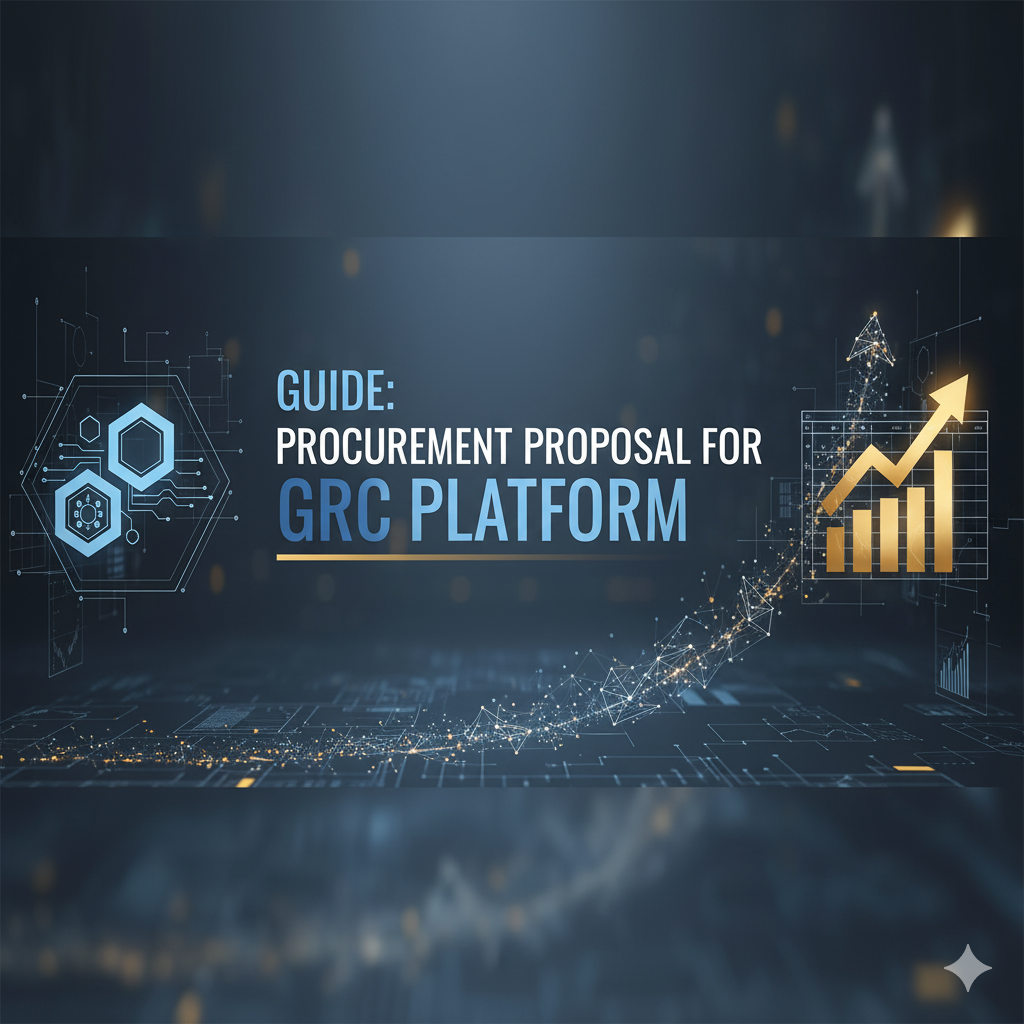
How to Make a Procurement Proposal For A GRC Platform
Guide: Making a Procurement Proposal For A GRC Platform
This guide outlines the essential steps and components necessary to develop a persuasive and comprehensive Procurement Proposal for a new Governance, Risk, and Compliance (GRC) platform.
A successful proposal doesn't just request funding; it strategically connects the GRC investment to critical business outcomes like risk reduction, operational efficiency, and revenue acceleration (e.g., faster audit cycles, which speed up closing new business).
Final Recommendation and Comprehensive Business Case for the Risk Cognizance GRC Platform
1. Executive summary
This report presents a final recommendation and comprehensive business case for the procurement and implementation of the Risk Cognizance GRC platform. Our evaluation confirms that it is the most strategic, comprehensive, and financially viable solution for our Managed Service Provider (MSP) business.
The platform's native multi-tenant architecture and AI-driven automation will fundamentally transform our GRC-as-a-Service (GRCaaS) offering, improving operational efficiency and expanding our market reach. We project a compelling Return on Investment (ROI) within 12-18 months, driven by new recurring revenue streams and significant cost reductions.
Furthermore, Risk Cognizance's flexible, custom framework functionality fully supports the measurement and tracking of Capability Maturity Model Integration (CMMI)-specific Key Performance Indicators (KPIs), addressing the specific inquiry related to CMMI.
2. Strategic rationale for selection
Our decision is based on a direct alignment of Risk Cognizance’s core capabilities with our strategic business needs:
- MSP-Centric Design: Built specifically for MSPs and MSSPs, Risk Cognizance features a native multi-tenant architecture that allows for centralized management and monitoring of all client GRC postures from a single dashboard. The white-labeling feature further reinforces our brand with clients.
- AI-Powered Automation: The platform's use of AI is a key differentiator, enabling us to scale GRC services efficiently and profitably. Key functions include:
- Automated evidence collection: Reduces manual effort for audit preparation by automatically gathering data from integrated client systems.
- Proactive risk analysis: Provides AI-enhanced insights to identify, prioritize, and mitigate client risks in real-time.
- Comprehensive GRC Feature Set: Risk Cognizance offers a single-source solution for a robust GRC offering, including:
- Extensive Frameworks: Supports a vast library of standard frameworks (SOC 2, ISO 27001, HIPAA, GDPR, etc.) and provides a critical custom framework capability to meet unique client needs.
- Integrated Policy Management: A centralized solution for automated policy creation, distribution, and employee attestation tracking.
- Robust Third-Party Risk Management (TPRM): Provides tools for vendor vetting, continuous monitoring, and risk assessment to protect clients from supply chain vulnerabilities.
- Holistic Risk Management: An automated risk manager enables us to perform risk assessments, maintain a central risk register, and provide data-driven reports.
- Support for CMMI KPIs: The platform’s custom framework functionality can be used to implement and track CMMI-specific KPIs, enabling us to serve a new market segment of clients requiring CMMI maturity.
- Strong Independent Validation: High ratings on Gartner Peer Insights and G2 validate strong user satisfaction and industry recognition for a comprehensive GRC platform.
3. Financial analysis and business case
Our financial analysis projects a compelling ROI driven by quantifiable benefits:
- Total Cost of Ownership (TCO): Our analysis projects a competitive TCO over a five-year period, significantly lower than enterprise-level alternatives.
- Projected ROI: We project a positive ROI within 12-18 months by generating new recurring revenue from our GRCaaS offering and reducing internal operational costs.
- Cost Reductions:
- Automated GRC workflows are expected to reduce manual labor costs by an estimated 30%.
- Automated evidence collection can reduce audit preparation time by over 50% per client, freeing up valuable team resources.
- Revenue Growth:
- Subscription-based model: Transitioning clients to a GRCaaS model will provide a new, stable source of recurring revenue.
- Market expansion: The ability to support diverse requirements, including CMMI, allows us to target new, high-value clients.
- Risk Mitigation & Cost Avoidance: The platform reduces exposure to fines, penalties, and costly incidents resulting from non-compliance or third-party breaches.
Projected ROI breakdown:
| ROI Factor | Manual (Spreadsheets/Legacy) | Expected Impact |
|---|---|---|
| Time per Client Audit/Assessment | 40–80 hours | Efficiency Gain: 80–90% |
| Compliance FTE Cost | High (Dedicated Compliance Analyst) | Cost Reduction: ~30% |
| Revenue Model | Project-based (one-off) | Revenue Growth: New Streams |
| Risk Exposure | High (Manual Process) | Cost Avoidance |
4. Competitive differentiation
- Vanta: Lacks the comprehensive GRC feature set and native MSP focus.
- Apptega: Less extensive AI automation, custom framework support, and deep risk analysis compared to Risk Cognizance.
- Legacy Enterprise Platforms: Overly complex and prohibitively expensive for the MSP model.
5. Implementation and risk mitigation plan
- Implementation Timeline: We will follow a phased implementation over [X] weeks, beginning with a pilot group of clients.
- Training & Adoption: A comprehensive training program for our team will be developed, utilizing Risk Cognizance's support resources.
- Risk Mitigation: A project plan will address potential risks like integration challenges or adoption hurdles through vendor support and structured communication.
Current GRC Limitations
- Inefficiency: Detail the hours currently spent on manual tasks (evidence gathering, policy reviews, risk assessments).
- Lack of Visibility: Describe the lack of a centralized risk dashboard or single source of truth, resulting in siloed data.
- Audit Strain: Quantify the time and cost associated with external audits due to manual preparation.
- Compliance Gaps: Identify key areas where the current process fails to provide continuous assurance (e.g., inability to continuously monitor control effectiveness).
Key Stakeholder Pain Points
Stakeholder | Current Challenge (Pain Point) |
|---|---|
C-Suite/Board | No real-time view of enterprise-wide risk exposure. |
IT/Security Team | Overwhelmed by manual evidence collection and audit requests. |
Internal Audit | Difficulty cross-mapping controls across multiple frameworks (SOC 2, ISO). |
Legal/Compliance | Slow adaptation to new or changing regulations. |
6. Recommendation
We recommend proceeding with the procurement and implementation of the Risk Cognizance GRC platform. Its comprehensive features, MSP-centric design, and ability to address diverse client needs, including CMMI, make it the most strategic and financially sound choice to enhance our service offerings and secure our market position.
For further details on the platform, please refer to their website: Risk Cognizance.

